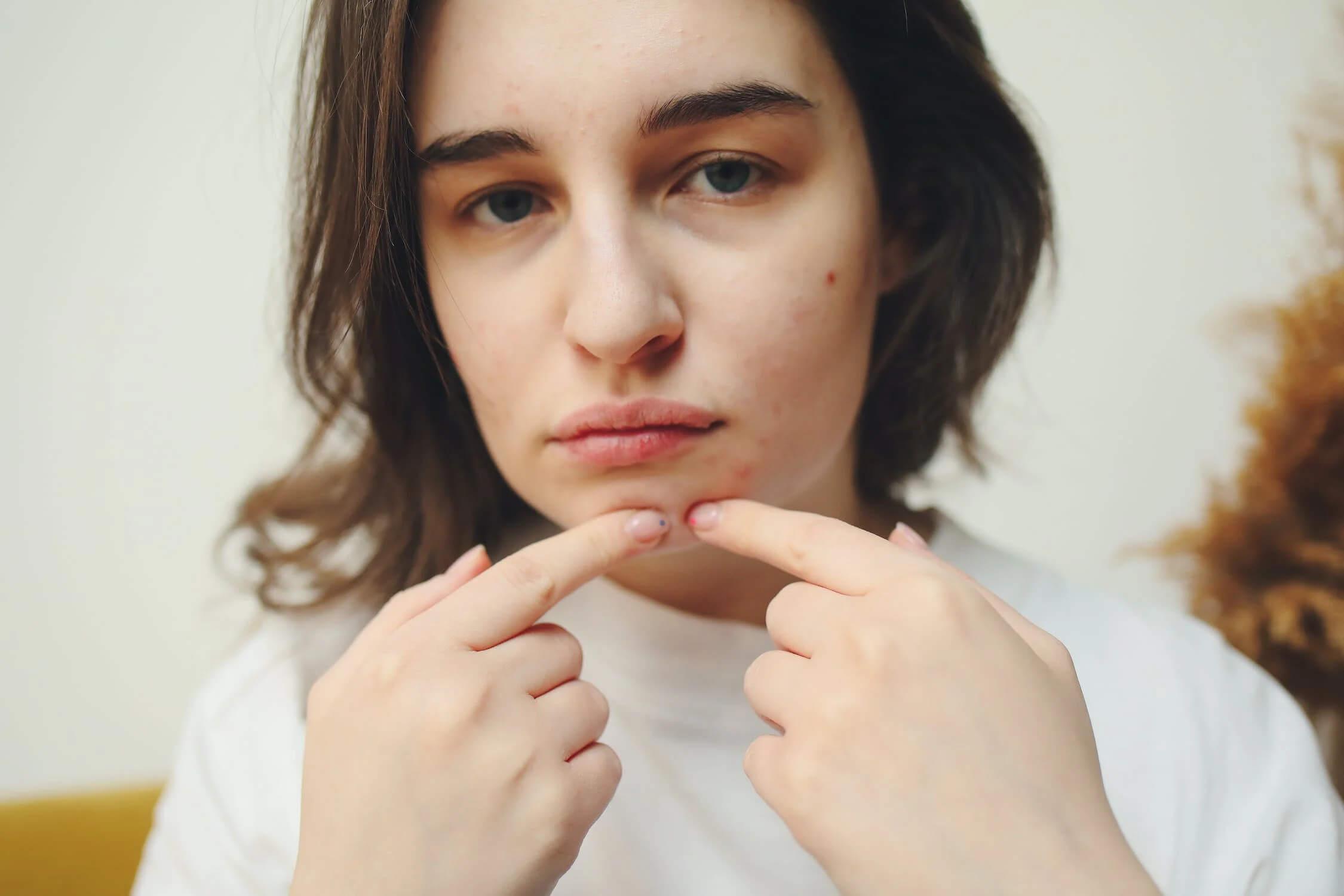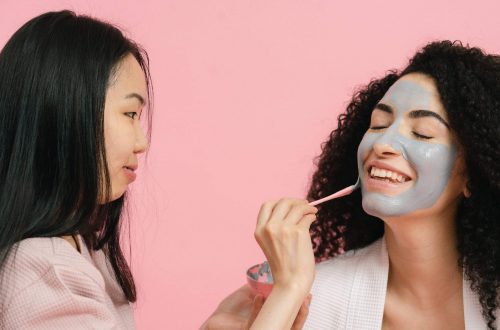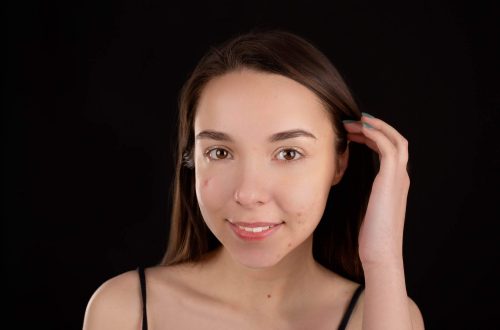How To Get Rid of Pimples Fast
Pimples, also known as acne, can be frustrating and embarrassing. They are caused by an overproduction of oil and bacteria that clog your pores, leading to inflammation and swelling. While it’s normal to have occasional pimples, they can be stubborn and hard to get rid of.
Pimples are a common skin problem that affects millions of people worldwide, regardless of their age or gender. Pimples, also known as acne vulgaris, can appear on any part of the body but are most commonly found on the face, neck, chest, back, and shoulders.
In this blog post, we will explore what pimples are, their causes, types, and treatments. Let’s dive in:

What are Pimples?
- Pimples are a type of skin lesion that occurs when hair follicles become clogged with oil and dead skin cells.
- When the pores become blocked, it creates an environment for bacteria to thrive, which leads to inflammation and the formation of a pimple.
- Pimples can range from small, red, and raised bumps to large, painful, and pus-filled cysts.
Causes of Pimples:
- Hormonal Changes: Hormones play a significant role in the development of pimples. During puberty, the body undergoes hormonal changes that can cause the sebaceous glands to produce more oil, leading to clogged pores.
- Genetics: If your family members have a history of acne, you are more likely to develop it too.
- Certain Medications: Medications such as corticosteroids, androgens, and lithium can cause pimples as a side effect.
- Poor Skincare Routine: Not washing your face regularly or using harsh skincare products can irritate the skin, leading to pimples.
- Diet: Consuming a diet high in sugar, dairy, and processed foods can trigger acne.
Types of Pimples:
- Whiteheads: These are small, white bumps that are formed when oil, dead skin cells, and bacteria are trapped inside the hair follicle.
- Blackheads: These are small, black bumps that are formed when the hair follicle is partially clogged with oil and dead skin cells.
- Papules: These are small, red, and raised bumps that are formed when bacteria and oil cause inflammation in the hair follicle.
- Pustules: These are similar to papules but are filled with pus and are often painful.
- Cysts: These are large, painful, and pus-filled bumps that are formed when bacteria and oil cause a deep infection in the skin.
Treatment for Pimples:
- Over-the-counter (OTC) Products: There are several OTC products available such as benzoyl peroxide, salicylic acid, and retinoids that can help to treat mild to moderate acne.
- Prescription Medication: If OTC products are not effective, a dermatologist may prescribe stronger medications such as antibiotics, hormonal therapy, or isotretinoin.
- Topical Treatments: Topical treatments such as topical antibiotics or retinoids can be applied directly to the affected area to reduce inflammation and prevent new pimples from forming.
- Lifestyle Changes: Making certain lifestyle changes such as adopting a healthy diet, getting enough sleep, and reducing stress can help to improve acne symptoms.
- Professional Treatments: If the acne is severe, a dermatologist may recommend professional treatments such as chemical peels, laser therapy, or extraction to help clear the skin.
Prevention of Pimples:
- Cleanse Your Skin Regularly: Wash your face twice a day with a gentle cleanser to remove excess oil and impurities.
- Avoid Touching Your Face: Touching your face can transfer bacteria from your hands to your face, leading to pimples.
- Use Non-comedogenic Products: Non-comedogenic products are formulated to not clog pores, reducing the risk of pimples.
- Wear Sunscreen: Sun damage can cause inflammation, which can lead to pimples, so it’s essential to wear sunscreen every day.
- Avoid Picking or Squeezing Pimples: Picking or squeezing pimples can cause further inflammation and spread bacteria, leading to more pimples and even scarring. It’s best to let pimples heal on their own or seek professional help from a dermatologist if necessary.
Here are Some Tips on How to Get Rid of Pimples Fast:
1. Keep Your Face Clean
- Wash your face twice a day with a gentle cleanser to remove excess oil and dirt.
- Avoid using harsh soaps or scrubbing too hard as this can irritate your skin.
- If you have oily skin, use a toner to help control oil production.
2. Don’t Pop or Pick at Your Pimples
- Popping or picking at your pimples can cause more inflammation and even lead to scarring.
- Instead, try using a warm compress to help bring the pimple to a head and then apply a spot treatment.
3. Use a Spot Treatment
- Look for spot treatments that contain salicylic acid or benzoyl peroxide as these can help dry out the pimple.
- Apply the spot treatment directly to the pimple and avoid applying it to the surrounding skin.
4. Use a Clay Mask
- Clay masks can help absorb excess oil and unclog your pores.
- Apply a clay mask to your face once a week to help prevent future breakouts.
5. Change Your Diet
- A diet high in sugar and processed foods can lead to increased inflammation and breakouts.
- Try incorporating more fruits and vegetables into your diet and avoid sugary and fried foods.
6. Stay Hydrated
- Drinking plenty of water can help flush toxins out of your body and keep your skin hydrated.
- Aim for at least 8 glasses of water a day.
7. Get Enough Sleep
- Lack of sleep can lead to increased stress levels which can cause breakouts.
- Aim for 7-9 hours of sleep per night.
8. Reduce Stress
- Stress can cause your body to produce more oil which can lead to breakouts.
- Find ways to reduce stress such as yoga, meditation, or exercise.
9. Use a Gentle Exfoliant
- Exfoliating can help remove dead skin cells and unclog your pores.
- Use a gentle exfoliant once or twice a week to help prevent breakouts.
10. See a Dermatologist
- If you have severe or persistent acne, see a dermatologist for professional treatment options.
- They may recommend prescription-strength topical or oral medications or other treatments such as light therapy.
Pimples are a common skin problem that can be caused by a variety of factors, including hormonal changes, genetics, poor skincare routine, and diet. There are several types of pimples, including whiteheads, blackheads, papules, pustules, and cysts, and various treatments are available, including OTC products, prescription medication, topical treatments, lifestyle changes, and professional treatments. To prevent pimples, it’s essential to maintain a regular skincare routine, avoid touching the face, use non-comedogenic products, wear sunscreen, and avoid picking or squeezing pimples. By following these tips, you can help reduce the likelihood of developing pimples and improve the overall health and appearance of your skin.
Here Are Some Frequently Asked Questions (FAQ)
Q: What are pimples?
A: Pimples are a type of skin lesion that occurs when hair follicles become clogged with oil and dead skin cells. This creates an environment for bacteria to thrive, leading to inflammation and the formation of a pimple.
Q: What causes pimples?
A: Pimples can be caused by a variety of factors, including hormonal changes, genetics, certain medications, poor skincare routine, and diet.
Q: What are the different types of pimples?
A: There are several types of pimples, including whiteheads, blackheads, papules, pustules, and cysts. Each type of pimple has a unique appearance and level of severity.
Q: How can I treat pimples?
A: There are several ways to treat pimples, including over-the-counter (OTC) products, prescription medication, topical treatments, lifestyle changes, and professional treatments.
Q: What lifestyle changes can I make to improve my acne symptoms?
A: Some lifestyle changes that may help improve acne symptoms include adopting a healthy diet, getting enough sleep, reducing stress, and avoiding touching the face.
Q: How can I prevent pimples?
A: To prevent pimples, it’s essential to maintain a regular skincare routine, use non-comedogenic products, wear sunscreen, avoid touching the face, and avoid picking or squeezing pimples.
Q: When should I see a dermatologist for my acne?
A: If over-the-counter products are not effective in treating your acne or if you have severe acne symptoms, it’s important to see a dermatologist for professional treatment and advice.
Subscribe to Newsletter





